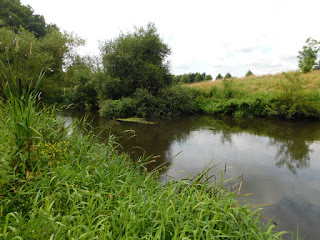Last year, in late September, we visited several of the ponds on Dibden Bottom and got a total of two species (common darter and southern hawker); it was clear the season had come to an end! So we decided to go around the same ponds again, and see what was active in early August.
In terms of butterflies, we saw a total of eight species, and nothing you wouldn't expect to see. What was notable, though, was the high number of silver-studded blues; we'd not seen this many together before! Most of them were looking pretty tattered; their season is clearly drawing to an end ...
At the first of the ponds, Rushbush pond, we saw masses of damselflies! Five species in total: common blue damsels, blue-tailed damsels, emerald damsels ...
..., large red-eyed damsels and small red-eyed damsels. The latter was a new species for us!
Was really good to see both species of red-eyed damselflies together, as it allowed us to get familiar with their distinguishing characteristics. Size was definitely one of those, but the 'blue wedge' towards the end of the abdomen in small red-eyes was pretty clear once you got your eyes on it.
Of course, an emperor patrolled the pond. And then I spotted an immature common darter floating on the surface .... It was clearly in trouble, so we fished it out of the pond and gave it another chance in life ...
On to Furzey pond!
Here, we were greeted by an emperor and many emerald damselflies, and the following picture can only be characterised by the term 'emerald group sex' ...
We crossed the road on our way to the 'hidden ponds'. At the first of these, we were greeted again by a patrolling emperor.
And then we saw what we really came to see here: black darters! New species #2 for the day!
At the second of the 'hidden ponds', we saw a few small red damselflies.
Working our way back to Rushbush pond, we followed a stream for a while, and that got us a few beautiful demoiselles.
A really successful day, equalling our best ever damseldragonfly day in terms of numbers of species: 12. Here the tables (one = 1; few = 2-4; several = 5-9; many = 10+):






























































